One of my favorite things to do when traveling to Brittany, which we do at least once a year, is to stop in at bakeries. All of them feature their own versions of Breton treats, which are unlike the creamy, lofty, and sometimes frilly pastries that Parisian bakeries are famous for. The focus of the pastries in Brittany is their famous butter, which is showcased in their traditional pastries.
Due to its windy and brisk climate, hearty buckwheat has been growing in the region since the 15th century. It’s used in galettes (buckwheat crêpes), some pastries, as well as a lesser-known specialty, Kig ha farz, a buckwheat dumpling poached in a cloth sack along with pork and vegetables that’s served either sliced or crumbled with the other ingredients. (There’s also a white-flour version called farz blanc, but I find it less-interesting than the buckwheat version.)
It’s not well known outside the region, even in France, and locals are often surprised that the guy with the accent américain knows what it is. When I mentioned to a local woman who ran an antique shop that I saw a video of someone making it in a micro-onde (microwave), she was both dumbfounded and appalled.
I love buckwheat in desserts, but as a baker who has feet in several cultures, I was surprised to learn that most French buckwheat flour is refined, not whole grain, whereas in the U.S.*, buckwheat flour is almost always whole grain. Breton desserts are mostly made with white flour, but on this trip to the Finistère region of Brittany, I found more and more made with buckwheat flour.
(Pro tip: If you’re dining in any crêperie in France, savory crêpes are made with either white flour or buckwheat flour, but dessert crêpes are always made with with white flour, called farine de froment. But you can ask for a buckwheat crêpe for dessert in place of the white flour one, which I always do, and no one’s ever refused to do it.)
Breton desserts are made with salted butter, not unsalted butter. Since Breton people use, and eat, a lot of it, butter traditionally was salted to preserve it. When restaurants serve butter, it’s always salted.
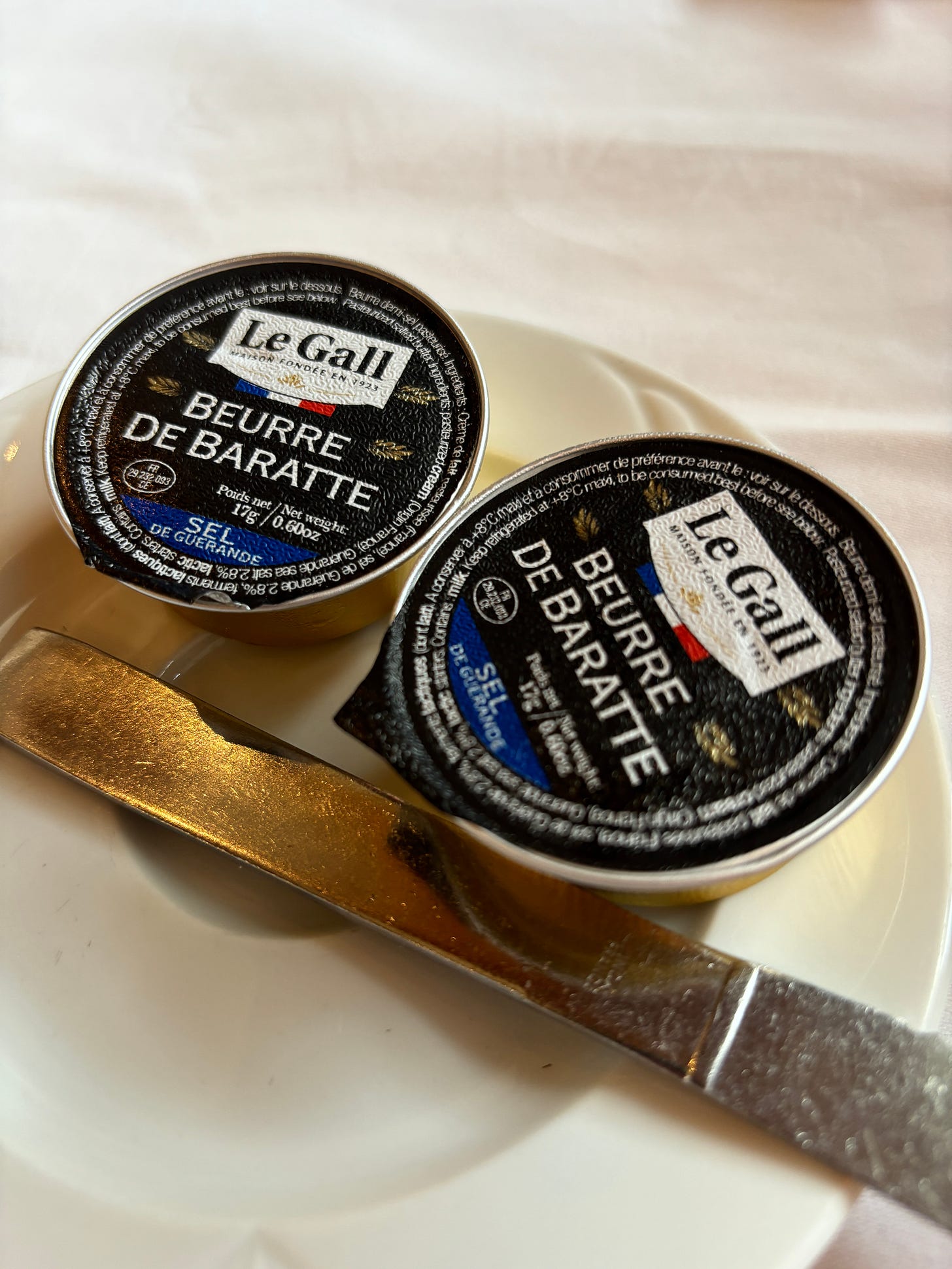
Romain’s mother was Bretonne, and he was happy to suit up for some Breton lobster…
Romain’s brother, who was traveling with us, told me he didn’t even think unsalted butter was available in the region, which I didn’t confirm. But the salted butter is so good there—why eat anything else?
Another thing you might come across in France are bakers who’ll “burn” pastries to make them look more appealing (at least to some of us…) and give them additional flavor. In the “You never know what you’re doing wrong until you post a picture of it online,” I’ve posted pictures of French pastries that are darkly cooked, and people will point out that they’re burnt. Too bad for them, because they’re missing out on some delicious food.
Personally, I don’t argue with people who are preparing my food (or online) because I’ve worked in kitchens and know that you shouldn’t argue with people feeding you. But at most bakeries in France, when ordering baguettes, some people ask for them pas trop cuite (not too cooked), and others, like me, prefer their baguettes bien cuite, well-cooked. It’s just a preference.
Romain’s brother told me that he liked the the gâteau breton, below, that was filled with a sliver of raspberry jam because it was close to burnt. And lest you think he doesn’t have good taste, he’s restored the Mona Lisa.
I saw some bakeries in Brittany selling kouign amann by the color; some were baked and almost white and blonde on top, while others were darkly caramelized, which are the ones I always go for. I actually ask them to rifle through them all to grab the one that’s the darkest.
Here are a few classic Breton pastries, which you can sometimes find at bakeries in Paris and in the rest of France. But truly, the best versions I’ve had are in Brittany…
Gâteau Breton
Depending on your definition of cake (gâteau), you might say this is closer to shortbread. But gâteau breton is usually baked in a larger “cake” shape and cut into wedges, which I’ve read is because fishermen used to take them out to sea with them. (There’s more here on the history of them, in French.) Nowadays, you find them in individual versions, like the ones above…
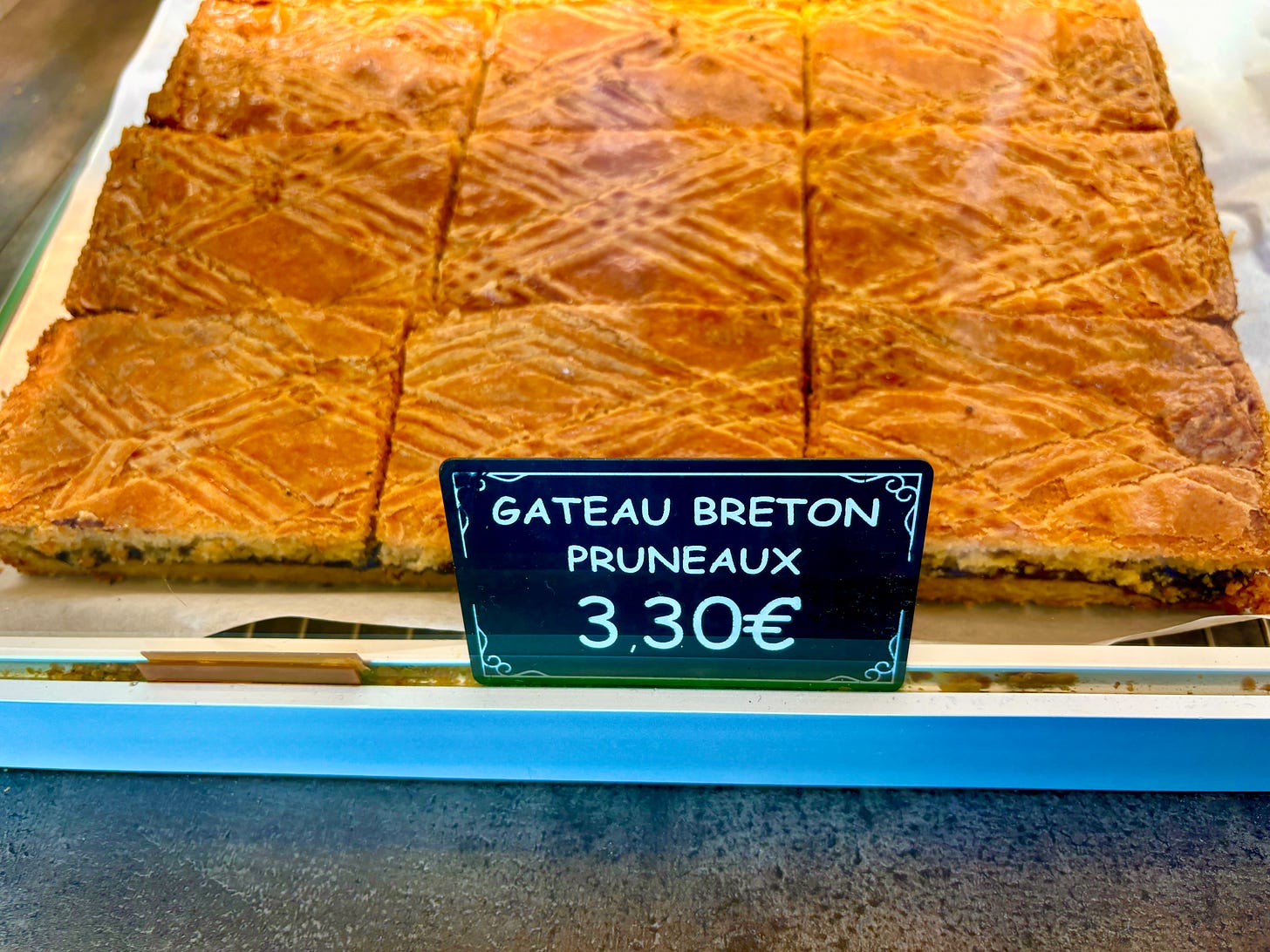
…or in rectangles, either nature (plain) or filled with jam, prune puree, or salted butter caramel. The texture inside is like a moist shortbread that’s truly mouthwatering, thanks to the flavor—and amount—of salted butter.
I’ve never made one with a filling, but I have a buckwheat gâteau breton recipe in my book, The Sweet Life in Paris, which was a goofy/funny book I wrote shortly after I moved to Paris (my agent said when she read it, she laughed so loud on the plane that everyone turned around to look at her) — Heidi from 101 Cookbooks featured the recipe on her website.
We liked the prune one so much that we went back every day for a slice, but generally bought two…or three.
Far Breton
We are big fans of picnics when we take road trips. My friend, Combat bar owner Margot Lecarpentier, sent me a text when I posted this video of our picnic on Instagram, saying that I should write a book on French picnics.
After I get done with the two books I’m working on, plus this newsletter post, the next one that I’m working on, and the stack of bookmarked recipes in cookbooks that I want to make, I’ll think about it. But for now, all I can tell you is that, like the media-friendly cliché of the “effortless” beauty of the Frenchwoman wearing her effortlessly tied scarf, French picnics are super simple and, yes, even more effortless than going to Hermès and buying a scarf. And a heckuva lot cheaper too.
The day before the trip, I pick up some sliced ham and maybe a chunk of terrine from the local butcher. (You can use this recipe here, or this vegan one, if you want to make your own.) I pack any bits of cheese we have on hand before we split for our trip, and I might buy some extras, sticking to firmer cheeses like Comté, Cantal, and Mimolette, which are easier to slice (and clean up after) than runny ones.
I hard-boil some eggs, pack some cornichons, slice tomatoes or bring along cherry tomatoes, and for the picnic in the video, I oven-roasted slices of eggplant and summer squash with olive oil, salt, pepper, and a bit of smoked paprika, since I had some beautiful eggplants to use in the refrigerator. I bring along flaky sea salt and some black pepper, and I made a fruit salad for dessert, and since two out of three of us weren’t driving, yes, there was wine. (And kombucha, for the driver.)
For other picnics we had while traveling in Brittany, we always brought along local pastries, including Far breton, a baked custard that’s embedded with prunes that have been flambéed in rum or Armagnac.
Some versions, admittedly, are rubbery and terrible. Avoid any that are unnaturally yellow-orange; if you’re not in a quality bakery, they may have been purchased frozen. It’s not a dessert for everyone, but we are fans of it. It makes good picnic fare, too, since it’s solid enough to slice and not messy to serve. Because I’m more of a stickler for hygiene than others, I bring along an insulated bag with ice in it to keep things like pots of yogurt and pâté cool, and I keep the far breton in that. Although, it tastes best at room temperature, so I unpack it at the beginning of the picnic.
Oh, and the ice goes into glasses of rosé for the picnic. And yes, I’m also a stickler for ice in cold drinks, so I travel with ice cube trays too. These ones from Oxo are the best for traveling, and they also come with covers. French ice cube trays make ice cubes the size of casino dice, and it takes a whole tray of them to chill one beverage. They also have single-use plastic bags that produce ice pellets the size of olives, which melt by the time you manage to squeeze them out of the plastic bags.
Kouign Amann
Probably the best-known of Breton desserts is the kouign amann. Since I’m two books, a few newsletter posts, and then a book on French picnics away from retirement, I can brag and give myself a little credit for helping introduce them in the U.S. when I wrote about them back in 2005, along with a recipe to make them. In case you don’t believe me, here’s one of my terrible pictures from back in the day, when we all had point-and-shoot cameras and thought our photos were works of art:
After that photo, I’ll stop bragging now… 😆🙈
Times have changed, thanks to people like Romina Rasmussen, who began making them at Les Madeleines in the U.S., shipping them across the country. And just to prove food brings people together, because of les kouigns amann, we’ve become friends, and I leaned on her for advice, and encouragement, when I shared a revised recipe for individual kouign amann in my book L’Appart, about the disaster of buying my first apartment in Paris. Yikes, was that a story…
Making kouign amann is also a bit of a production, and they’re not as easy to make as the French postcards say they are:
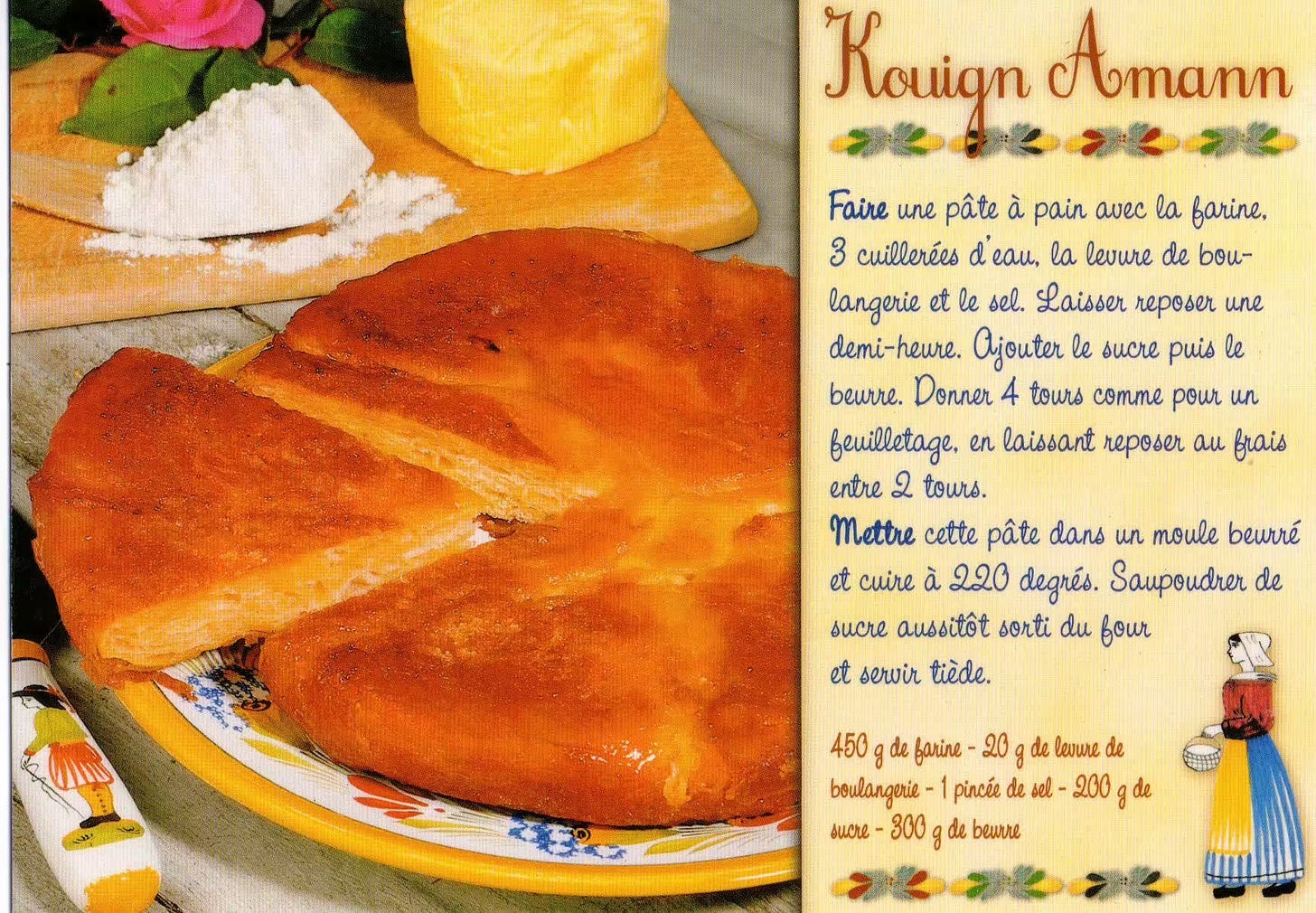
Frankly, I don’t know how they managed to write an entire recipe for Kouign Amann in five sentences. If I had that talent, my French picnic book would be off to the presses by the end of next week.
In the meantime, I’m happy to buy them. They’re everywhere in Brittany, sold individually, in cake-size rounds, and even sold by the slab at outdoor markets.
I generally make it a point not to eat French pastries when I’m traveling outside of France. Not because I’m a snob, but I don’t need to take a train to the Upper West Side of Manhattan for a macaron or sit in traffic for hours on the 405 in Los Angeles for a croissant, when I can walk to the bakery around the corner from my apartment here and get one. I save that stomach space for pepperoni pizza in New York and tacos in L.A.
But…if you’re ever in San Francisco and b. pâtisserie has their black sesame Kouign Amann available (which they apparently only make on special occasions), grab one, which is worth the ride on the #24 Divisadero bus.
Palets Breton
Palets bretons are big, buttery cookies. They’re thick and rich with the flavor of salted butter. The ones above are from a little shop called Breizh Cook’in on the port in Audierne (5 quai Anatole France), and they also had some with buckwheat that were so good, I’d go farther than the #24 bus, or the 1, 2, or 3 subway to the UWS, to have them.
Their coy Instagram page doesn’t say much, except that they close at 1:30pm daily, but Google says they close at 8:30pm, and we drove by one night at 10pm, and they were still open. C’est comme ça, as we say in France.
I’ve got a palet breton recipe in my next cookbook (coming out next spring), but wanted to try, and maybe include, a buckwheat version similar to the one that I had in Brittany, which also had a crust of roasted buckwheat groats. So I gave them a go at home.
They weren’t quite right, although it was just a first try. The roasted buckwheat groats I used were too crunchy; I guess there are different types of roasted buckwheat because the kind I generally get aren’t so toothsome.
I wrote up a basic recipe and if you want to try it, let me know in the comments. (UPDATE: I posted the recipe here, and posted a link just below.)
In the meantime, you can make these sablés bretons, which are Breton cookies that are both buttery and crisp, and also tasty.
More posts on Brittany…
*In the U.S., Anson Mills makes a refined buckwheat flour, which is used to make Japanese buckwheat noodles, or you can pay a lot to buy imported French refined buckwheat flour. (Amazon)




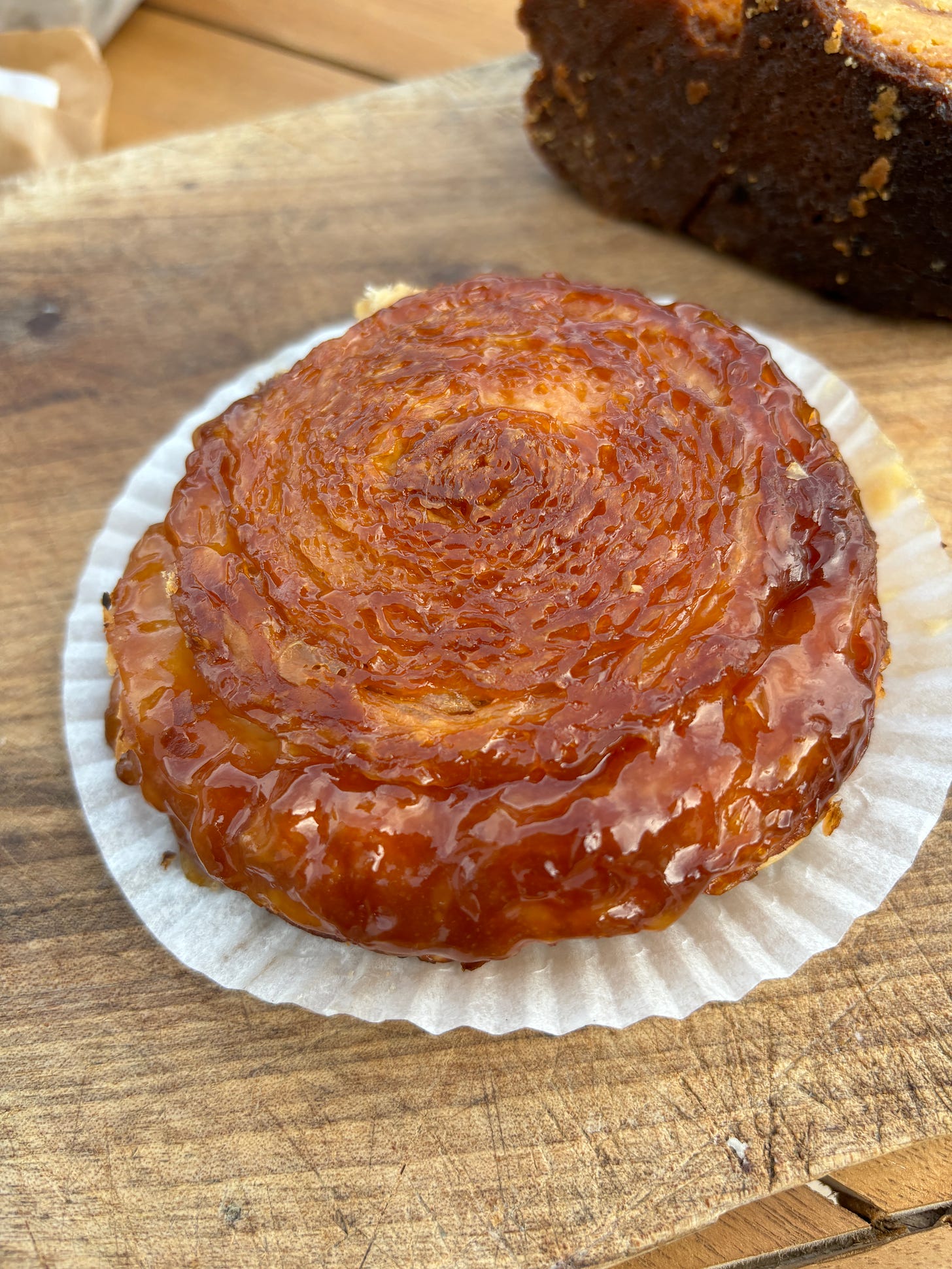
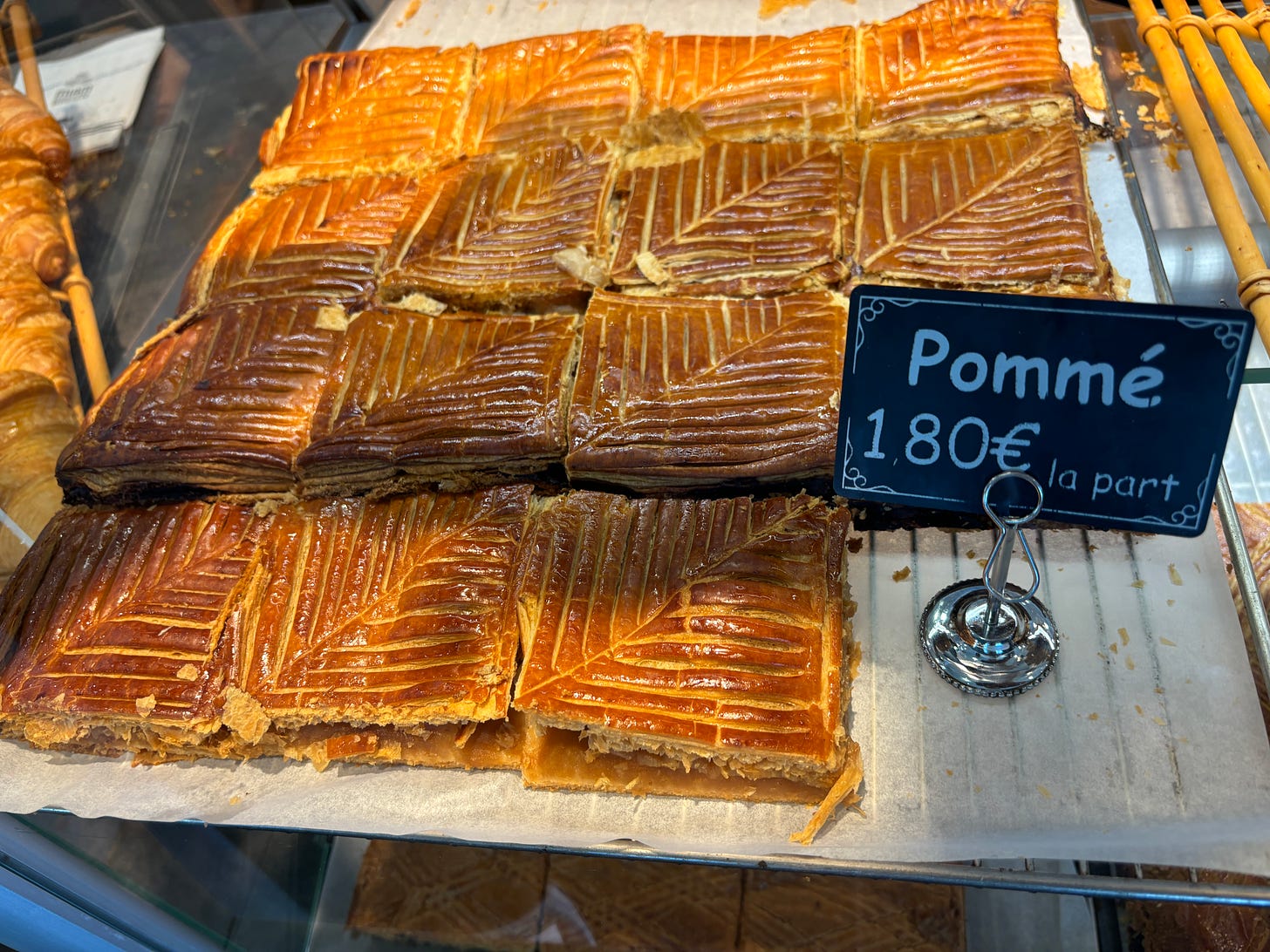

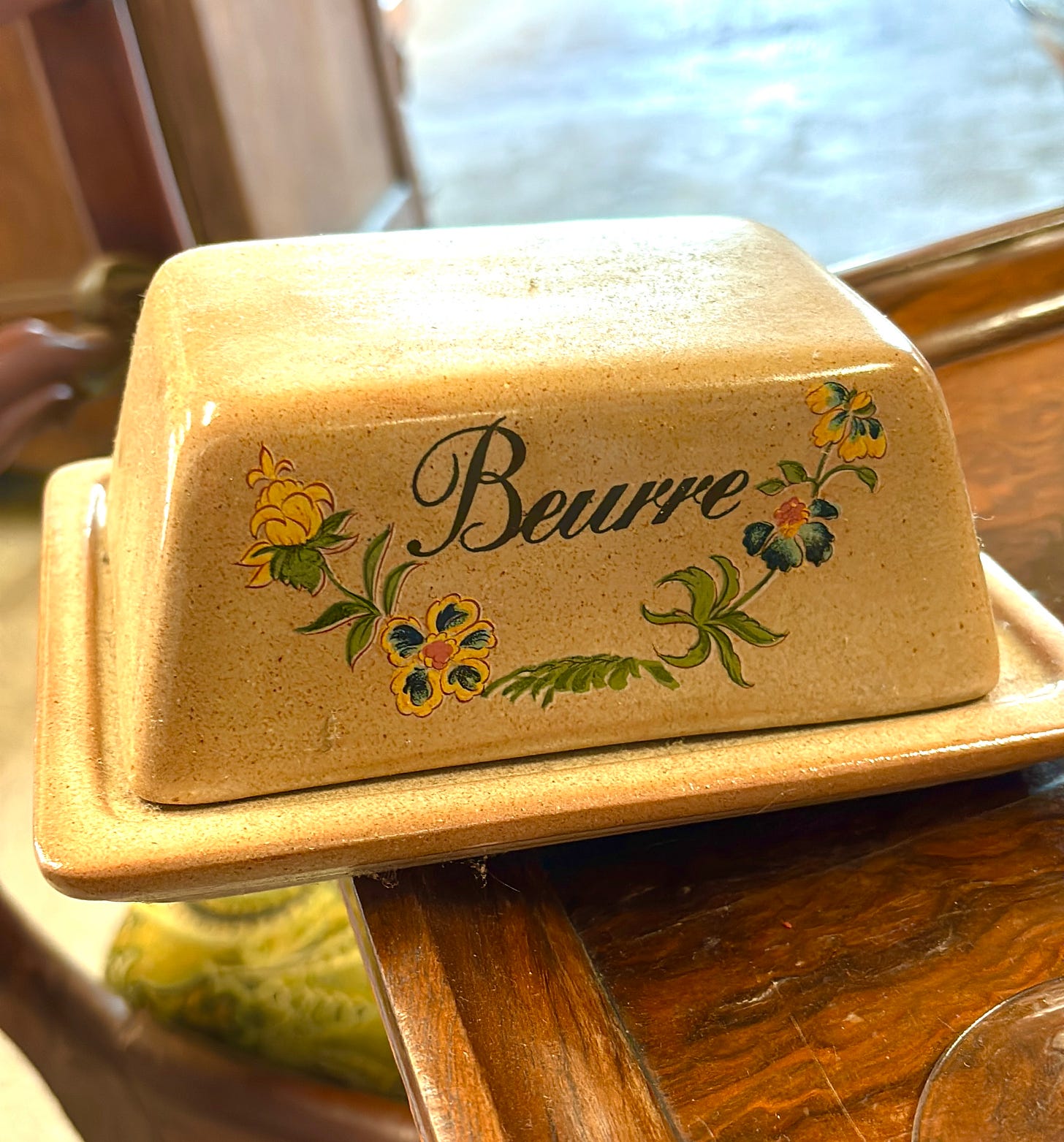

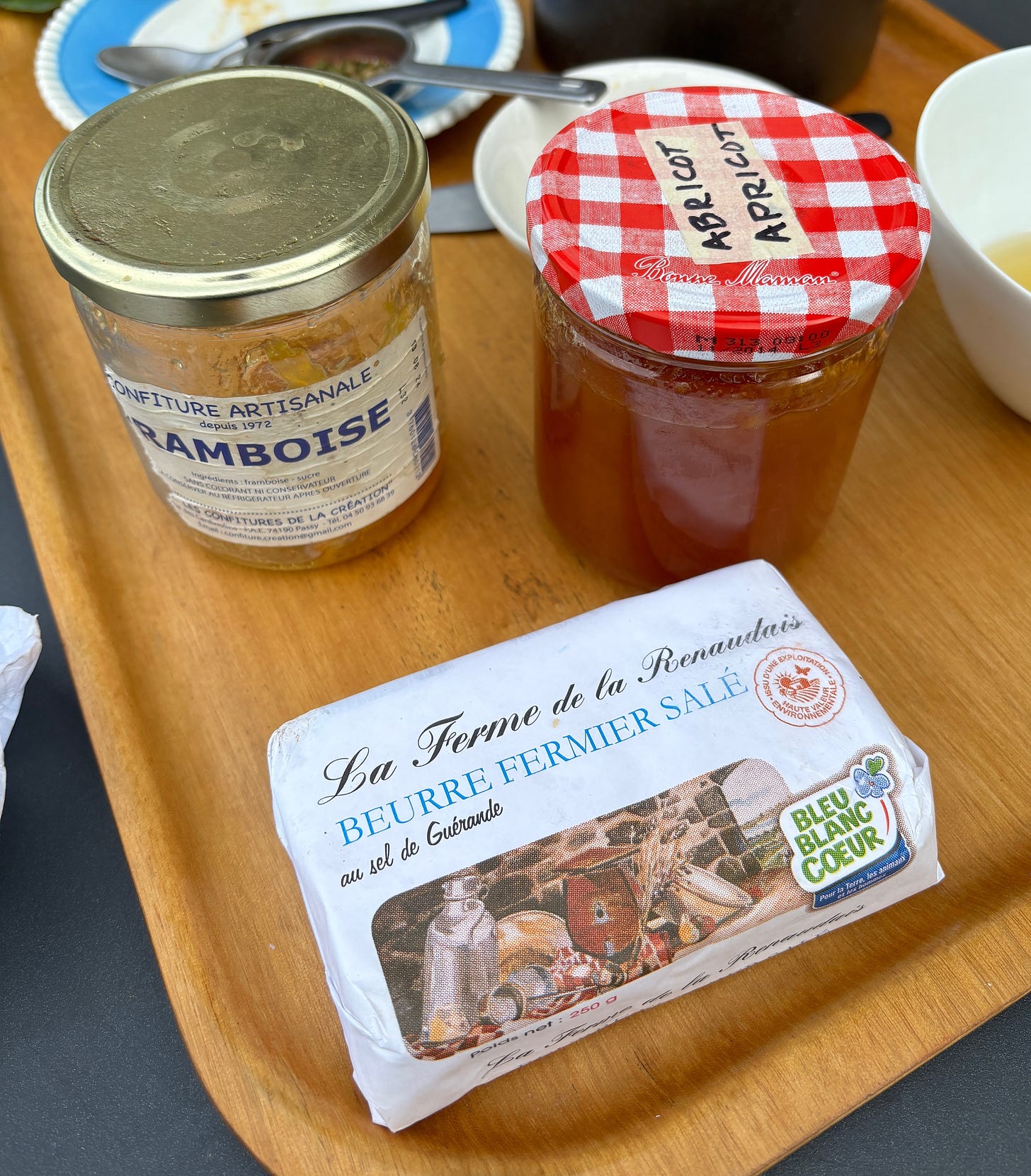
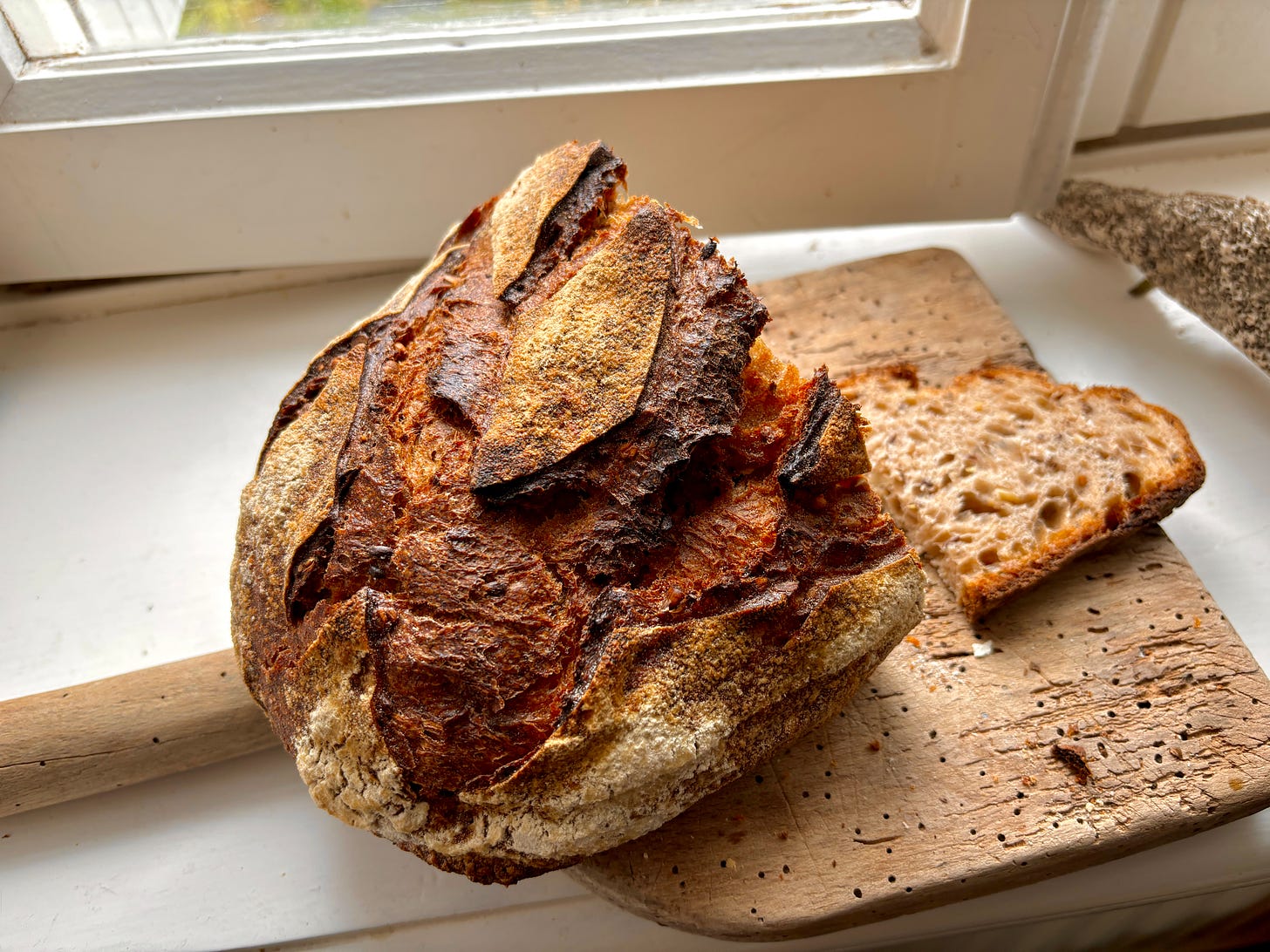
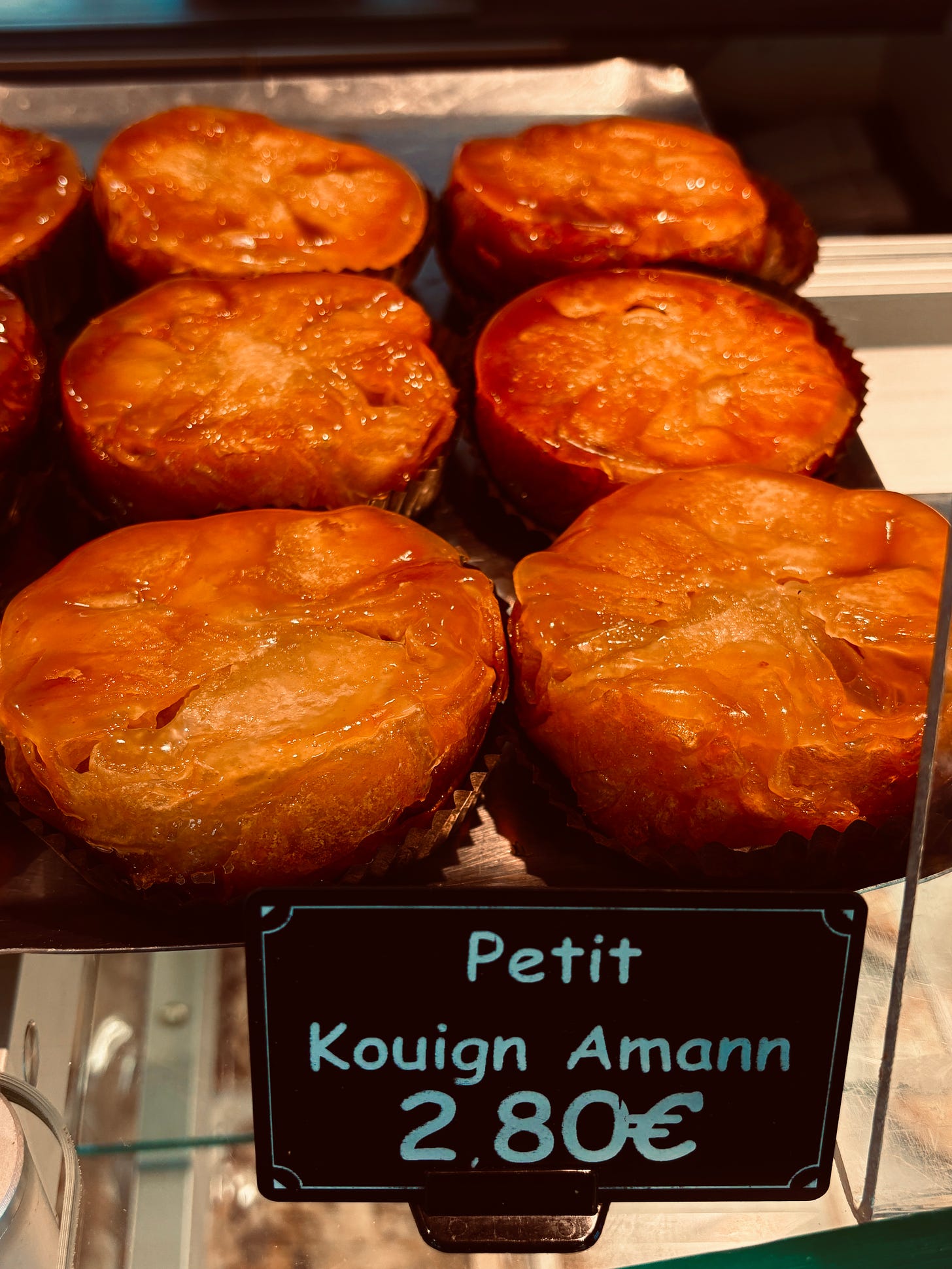
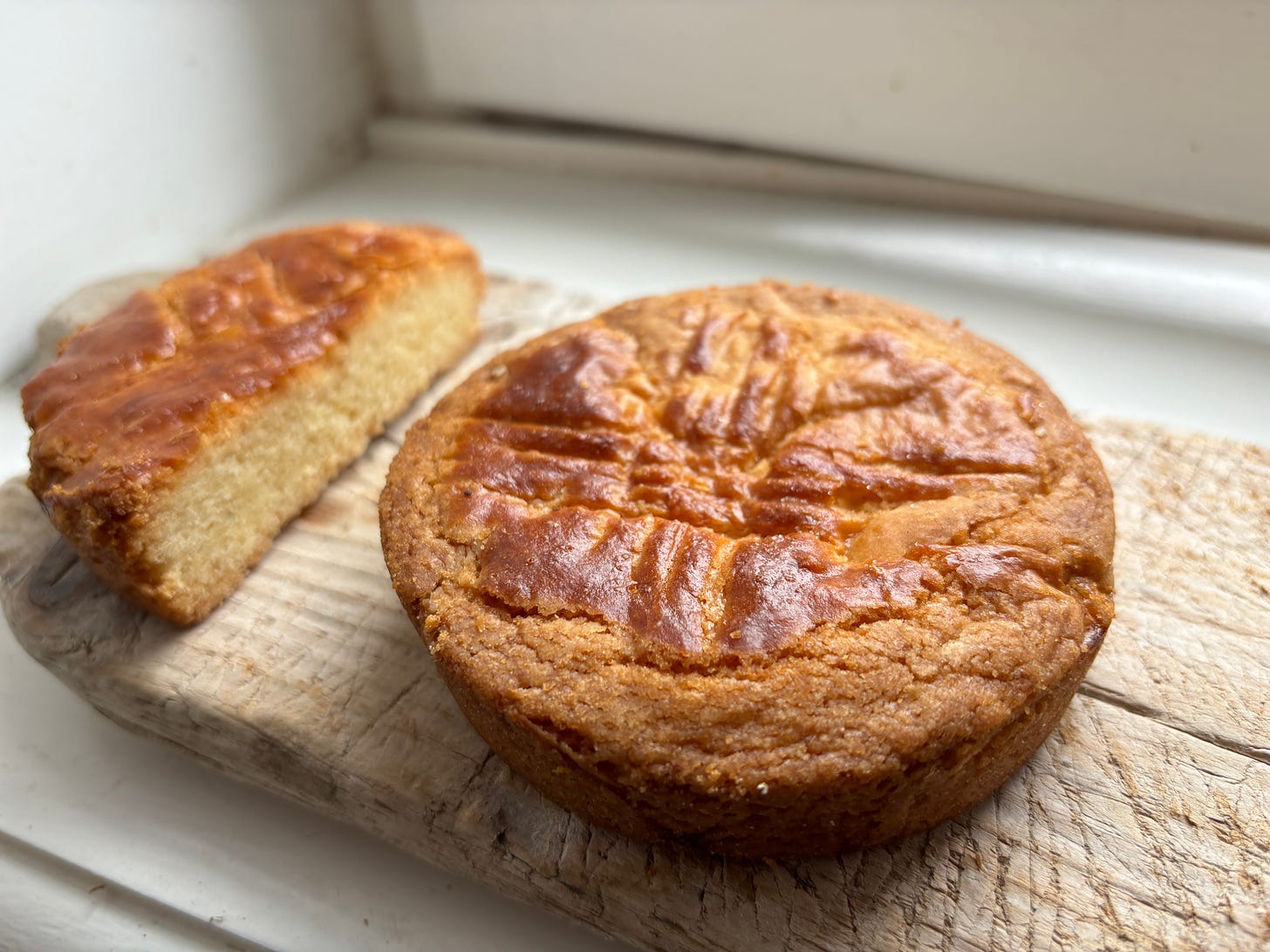
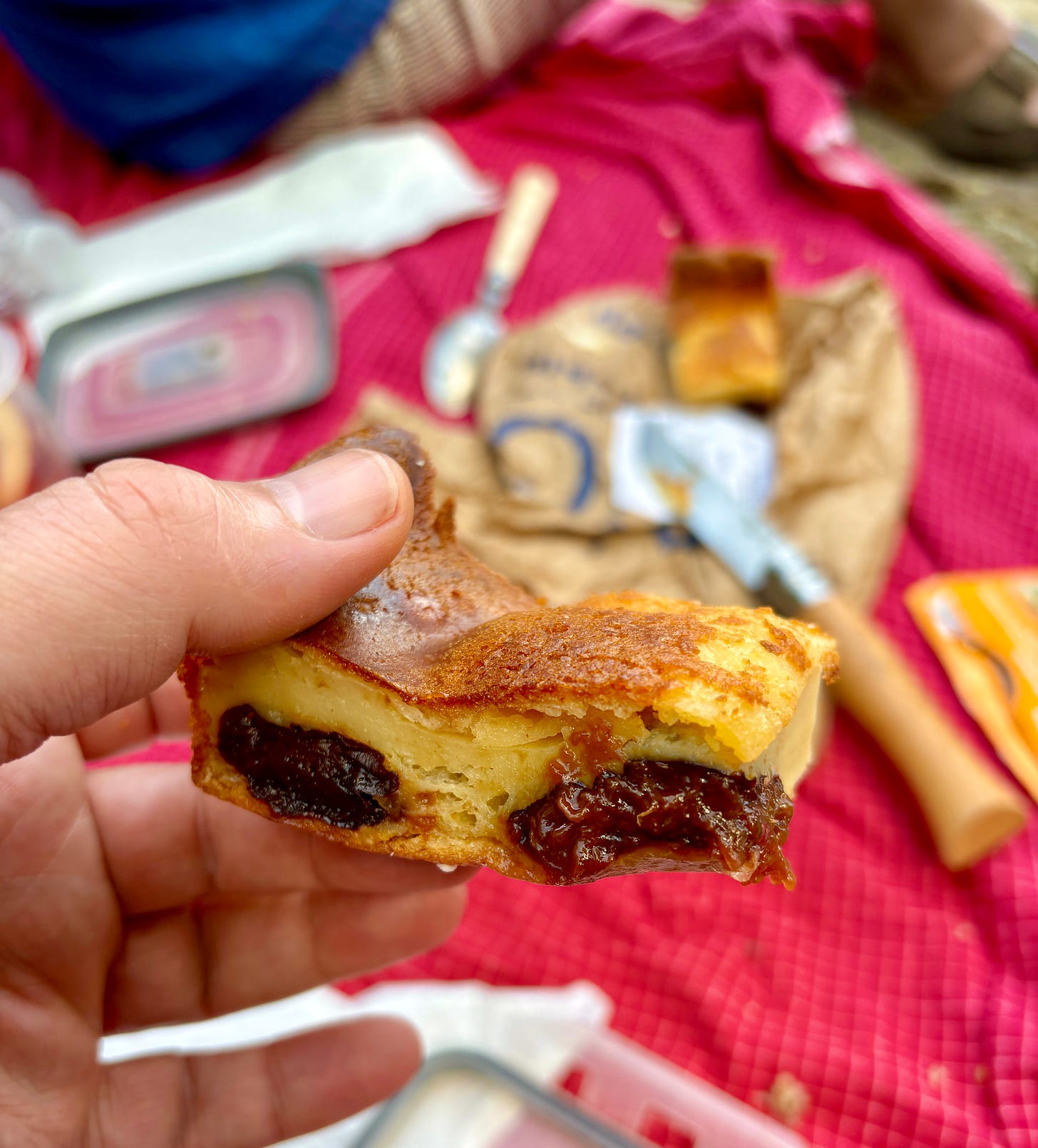

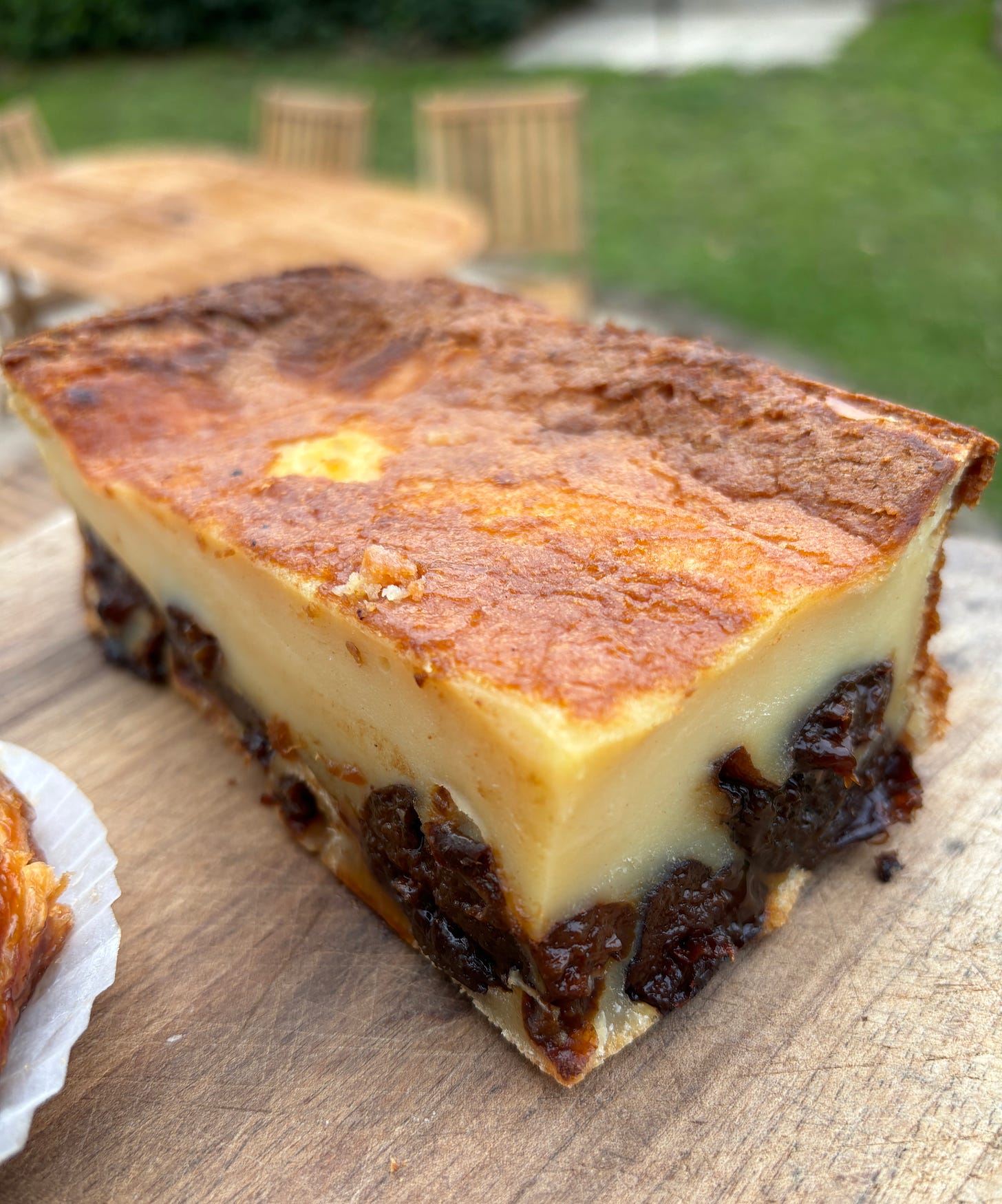

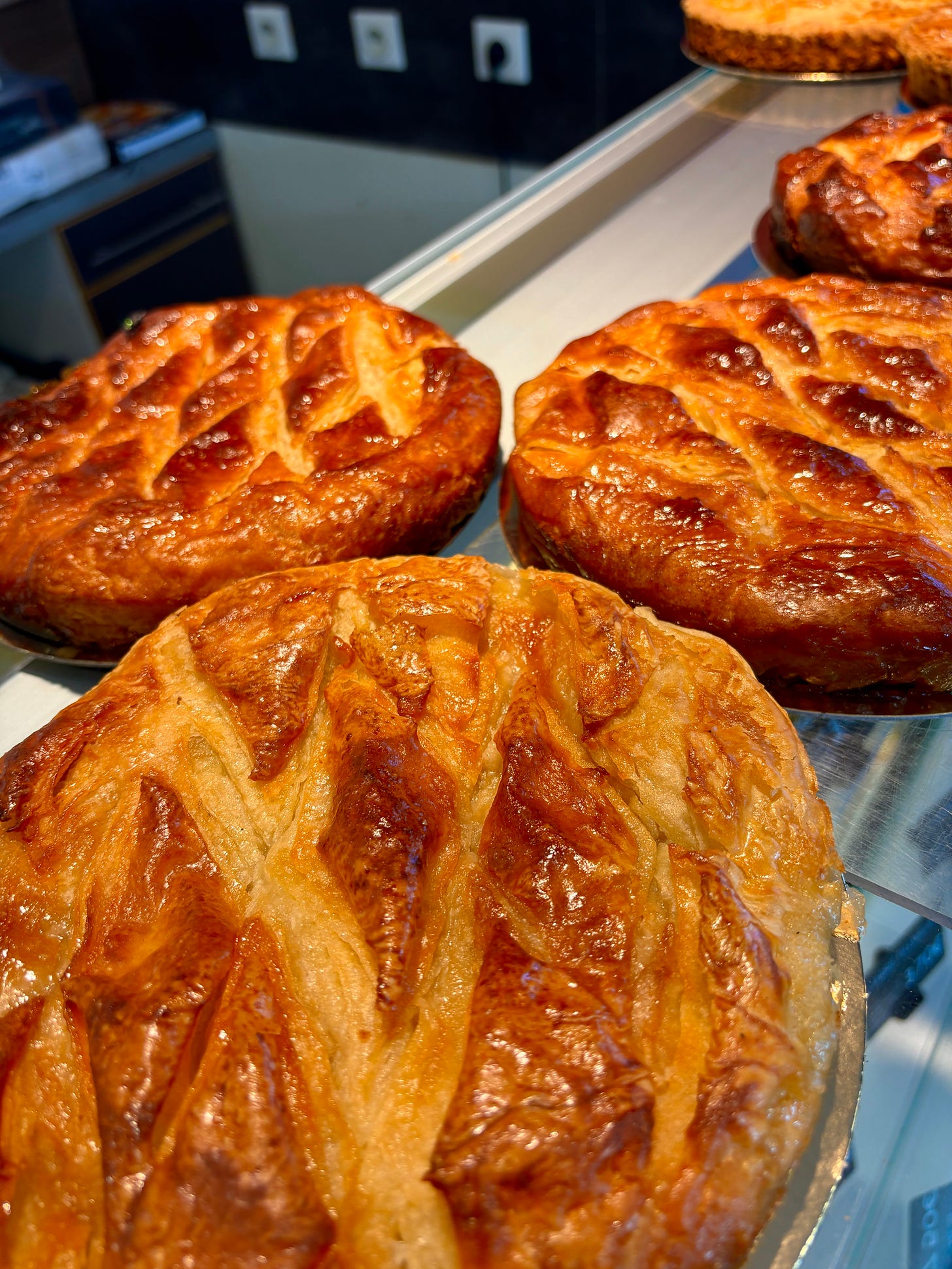
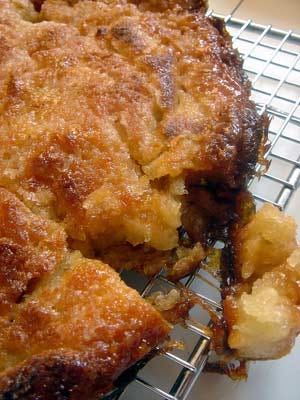
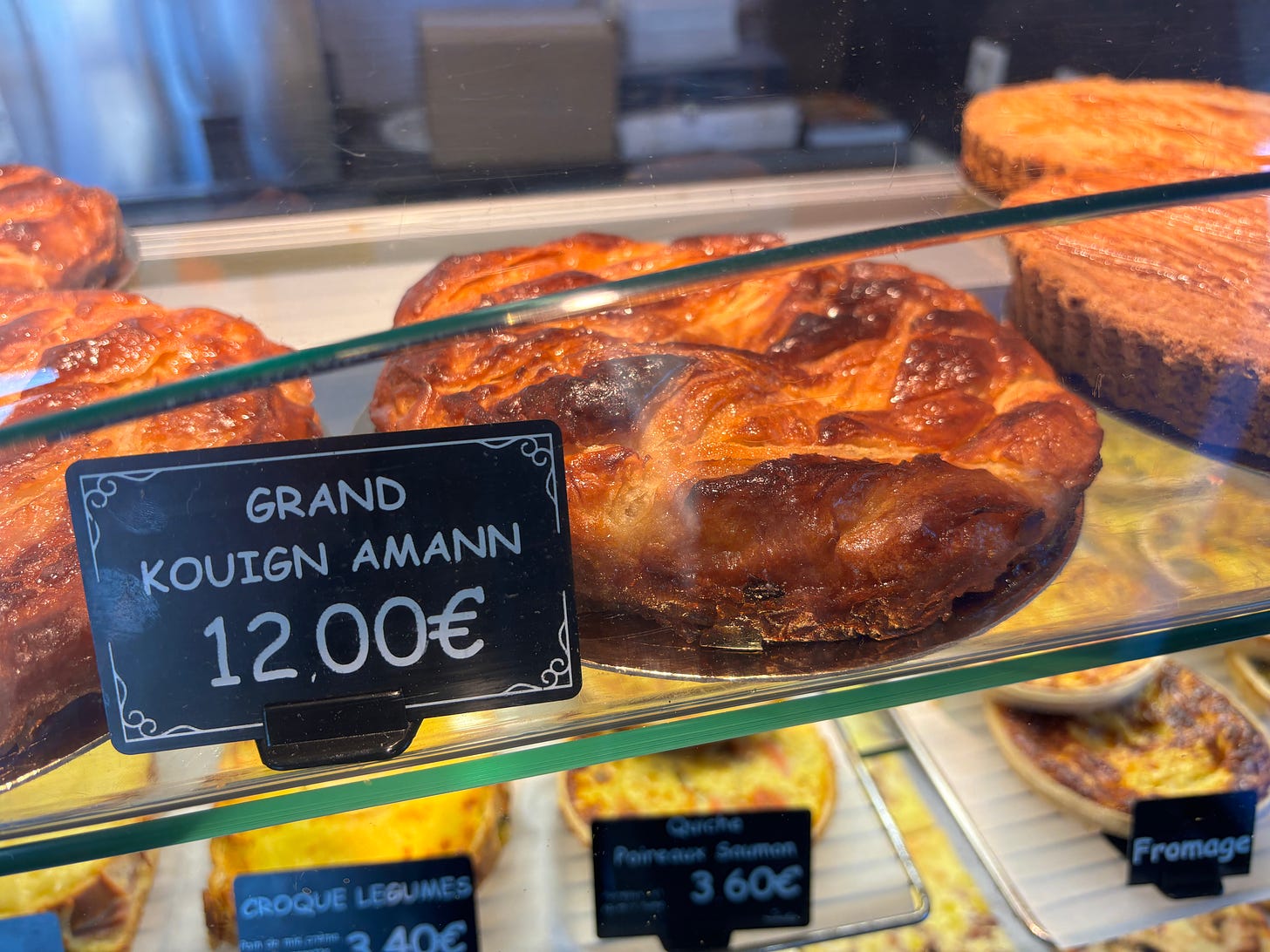



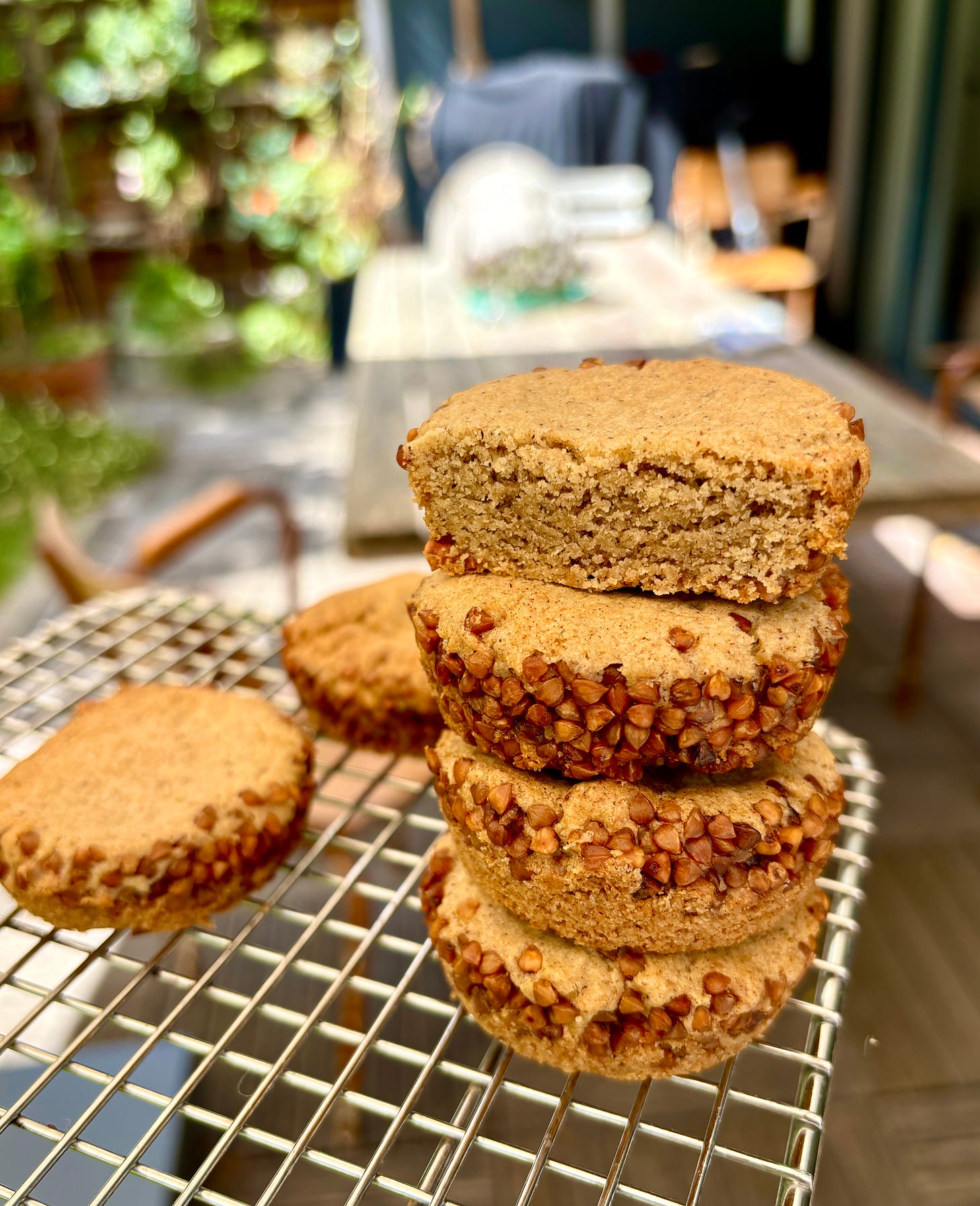



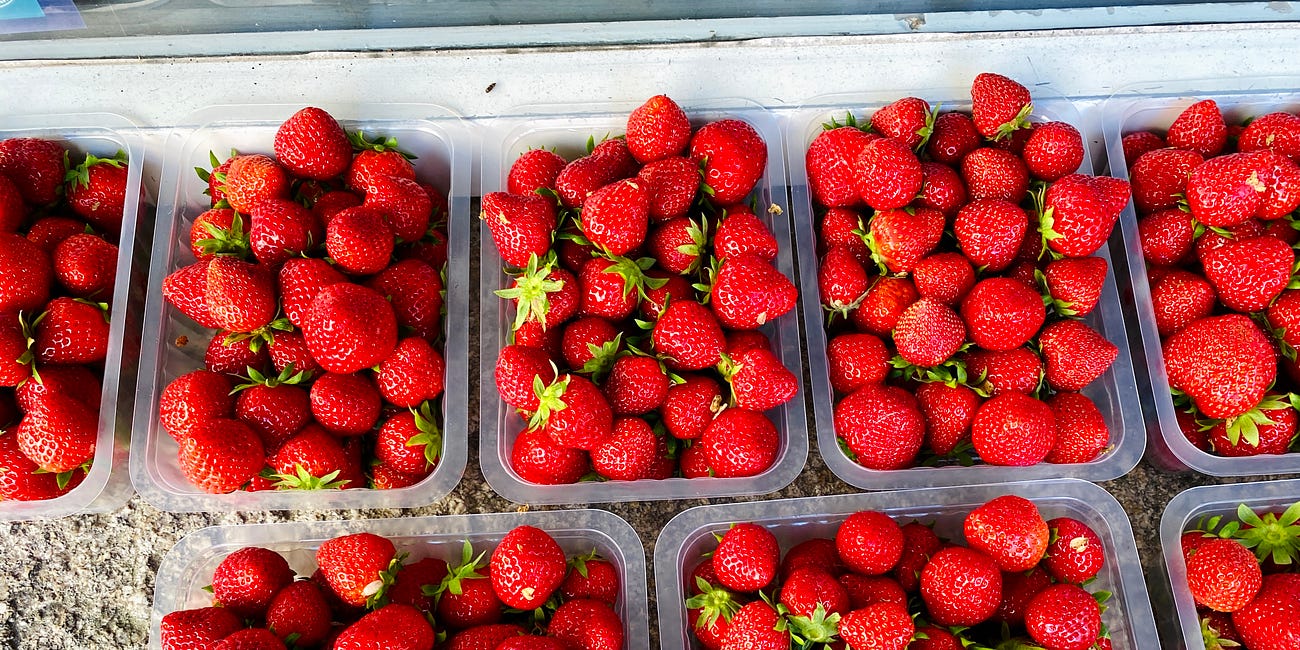
I want to try all of these.
What a great post. Kouign Amanns are my favorite, the darker, the better.
My husband is an engineer, only reads the driest scientific stuff. But I laughed so much reading The Sweet Life in Paris, that he asked to take a look. He read the whole book and I’ve heard him recommending it to people, even other engineers!